Member Blog: Key Metrics to Track & Mistakes to Avoid for Cannabis Retail Success in 2022

by Gary Cohen, Cova Software
Despite the pandemic, the cannabis industry has proven to be recession-proof and has grown exponentially over the past few years. Cannabis retail sales in the US are projected to top $30 billion in 2022, and as more states jump onto the legal bandwagon, competition will intensify. As such, dispensary owners must ensure that they are using data and analytics strategically to measure the health of their business. Many cannabis retailers fail because they don’t track crucial dispensary metrics or make avoidable mistakes.

Cannabis dispensary metrics are the data points that you must track regularly to help in better decision-making. Business intelligence reports generated via these metrics help you monitor your daily dispensary operations and create projections for future sales and required inventory. A robust cannabis POS system with advanced analytics and reporting capabilities collects information from various sources and unifies them into a single repository so that you can extract maximum insights for the growth of your retail business. By tracking some of the following important metrics, you can implement strategies to increase dispensary profits, enhance employee productivity, forecast inventory, and elevate the customer experience.
Cannabis Sales & Profits Metrics
- Number of Products Sold per Transaction
- Average Sales Value
- Total Sales for a Period
By tracking the average basket size and transaction value, you can evaluate your customer buying habits and ideal price points and create your marketing and promotional campaigns or upsell opportunities accordingly. Implementing strategies will help you increase these metrics, manage inventory and employees efficiently during your busiest sales periods, and thus, grow your dispensary profits.
Staff Productivity & Dispensary Traffic
- Individual Budtender Sales
- Busiest Sales Days/Hours
- Discounts and Refunds
Tracking individual budtender sales on your POS system will help you determine your top performers and aid in staff scheduling. Those employees who have higher sales per transaction must be scheduled during your busier hours of the day, and those who may not be performing can be offered training on strategies like deals, upsells, cross-sells, and bundles. Also, potential fraud can be identified by tracking discounts or refunds offered by employees.

Target Market & Customer Retention
- Customer Demographics
- New vs Returning Customers
- Customer Lifetime Value
Segmenting your target market helps design a more customized experience based on age, location, values, buying behavior, etc. By tracking each customer’s average number of transactions over a period of time, you can determine their lifetime value and better tailor your dispensary’s promotions and upselling strategies through targeted marketing campaigns. These metrics help curate an enhanced shopping experience and increase customer retention.

Inventory & Product Performance
- Inventory Turnover
- Shrinkage
- Top-selling Product Categories
Inventory turnover measures the number of times you sold through your entire inventory in a given period and allows you to determine how much of your cash flow is tied up in inventory. Shrinkage is the difference between the inventory you have on paper and the actual inventory in stock and helps you identify theft. Also, tracking your top-selling and lowest-performing products or categories can help in crafting strategic promotions and better inventory planning decisions.
Keep up With Changing Times
Successful cannabis retailers track top-selling products, profit per product, and all other metrics highlighted above, and use this data to make business decisions. If you have a robust and flexible cannabis retail platform that offers you these detailed data insights and can scale and adapt when needed, your dispensary will always stay ahead of the curve.
Learn in detail about all the mistakes to avoid and secrets to succeed in the cannabis retail industry by downloading Cova Software’s e-book, “Why Some Cannabis Retailers Fail”, which presents cautionary tales of what not to do if you want to thrive in the dispensary business.
 Gary Cohen is the CEO of Cova Software, the fastest growing technology brand in the cannabis industry. Cohen’s focus has been driving the company’s overall strategy, including its vision, go-to-market plan, and strategic development. Since joining the cannabis industry in 2016 and launching Cova commercially in 4q17, Cohen has led Cova to dominate the enterprise sector for dispensary Point of Sale, while forging client relationships with hundreds of single-store retailers across North America.
Gary Cohen is the CEO of Cova Software, the fastest growing technology brand in the cannabis industry. Cohen’s focus has been driving the company’s overall strategy, including its vision, go-to-market plan, and strategic development. Since joining the cannabis industry in 2016 and launching Cova commercially in 4q17, Cohen has led Cova to dominate the enterprise sector for dispensary Point of Sale, while forging client relationships with hundreds of single-store retailers across North America.
With Cova’s cannabis POS and its excellent integrations with eCommerce and delivery services, the online order automatically pops up for the budtender to tender the sales, and the POS system updates inventory once payment is approved. Cova offers multiple eCommerce solutions to choose from, as per your needs and budget, and you can legally sell cannabis online stress-free while staying compliant with strict government regulations.
Member Blog: 8 Ways Not to Blow it with Cannabis Customer Acquisition

by Jim Coyle, Coyle Hospitality Group
Cannabis dispensaries are at a crucial inflection point: as dispensaries become ubiquitous in consumer markets, the stigma of purchasing cannabis products is declining rapidly. What does this mean? Cannabis consumers with significant discretionary income are ready to begin with their first dispensary experience.
It is absolutely crucial to acquire these customers early in the lifecycle before your competitors capture them. The good news is that this first experience offers incredible potential to create a loyal and accretive customer. The bad news is that it is really easy for the cannabis dispensary to completely blow it.
Let’s take a page out of the luxury hotel operator playbook. They really get to know new guests, and they use what they learn to mint those guests into repeat customers who continually increase spend and refer like-minded customers.
Hoteliers talk and strategize about the Guest Journey. They track the touchpoints that guests encounter during the stay, and create service standards (like the 10&5 Rule described below) for these ‘moments of truth.’ For your staff, the Guest Journey begins with arrival and ends with departure.
Here’s how the best hoteliers prosper, and how cannabis dispensaries can participate.
Watch What You Say. Words Matter.
Terms like users, consumers and customers are words that don’t exist in hotels. Their customers are guests. And here is why that is both useful and critical. Every person in every culture receives guests, not customers, into their homes. Your staff needs to be thinking that the dispensary is their home and they are receiving guests there.
The 10&5 Rule: Know it, Love It.
When guests are in the proximity of a staff member, staff makes eye contact at 10 feet and greets first at five feet. Also called ‘having your radar on,’ ensure your staff understands this golden rule and practices it. Never burden your guests with having to begin a guest interaction. Extra credit if your staff acknowledges guests in line.
Make Curb Appeal, Curb Capture.
Details matter. Signage is where new guests’ eyes go first, and it should look professional – perhaps even homogeneous. Funny names, caricatures and double-entendres risk alienating new customers before they pull into your lot. The quality of the signage must absolutely be pristine. Chipped paint, dirt, or poorly lit signage sends out a constant radio signal that a business doesn’t pay attention to presentation or detail.
At a luxury hotel, the grounds are impeccably maintained and the point of entry is like a stage. You don’t need a grove of regal palm trees in your drive to make a good impression, but neatly cut grass, a perfectly maintained parking area, sidewalks free of cracks, and a front door that looks well cared for are table stakes.
Make Your Doorman a ‘Welcome Man.’
Often, dispensaries have a staff member at the door checking identification. It’s a mistake to view this interaction simply as compliance. If the door staff are provided a seat or something to rest on, have them rise to their feet when a car pulls in and make sure they hit the 10&5 every time.
Have you ever arrived at any hotel and seen the door staff sitting down? People interact naturally with each other standing up, ‘in-person.’ New guests are going to learn a lot about your dispensary from this initial encounter with your staff. Don’t blow it by making it solely about checking ID. Checking an ID is a transaction. Welcoming a guest is engagement. Speak in full sentences and start with a greeting. “Good morning/afternoon/evening” works every single time, and why not add the word ‘welcome’ to set the tone? Eliminate the meaningless ‘How are you?’ and do away with the command, ‘ID Please.’ First impressions are everything!
There is no need to be stiff or formal, but retire phrasing like ‘no problem,’ ‘thanks guys,’ and ‘how are you doing’?
‘The Luxury Concierge’ Starring Your Budtender.
The concierge is central to the luxury hotel experience. Concierges are experts as it pertains to everything a guest needs, but they are much more than that. A concierges’ main purpose is to surprise and delight guests. Why? Because surprise and delights create deeply emotional reactions that not only last a long time, they lead to storytelling.
In order to surprise and delight, the concierge/budtender must first be disarming and approachable (10&5 Rule, again). A real smile, focused eye contact and at-the-ready posture tells the guest ‘you can trust me.’
Next, the master concierge/budtender will engage and connect by reading the guest for cues, asking relevant questions, and then – and only then – beginning the collaboration. In a hotel, the family of four shlepping suitcases gets the same greeting as a tense-looking businesswoman… but the master concierge offers them very different surprises and delights.
‘What and how’ questions are the cornerstone of collaborative guest interactions. Asking questions that can be answered with a simple ‘yes’ or ‘no’ is not only unproductive, but it can be misleading. ‘What brings you in today?’ is so much more powerful than ‘can I help you?’
With the above said, it is so important for your staff to be authentic. Stay away from scripts, and insist on outcomes. Let the guest do most of the talking; your staff needs to be using their eyes and ears – not their mouths – as meaningful guest interactions start to unfold.
For instance, when a guest asks a concierge for a restaurant recommendation, it doesn’t just end there. The concierge will instead ask what kind of restaurants they like, if there are places in which they are already interested, who will be dining, or if there is a special occasion. Within 30 seconds, the concierge can learn that the guest is celebrating a birthday and that people in the party don’t like noise.
A good rule of thumb is to answer a question with a question that advances trust and engagement. ‘Do you have edibles?’ is better answered with, ‘Certainly, we have a lot of varieties that are popular, what types of edibles are you interested in?’
Guest Appreciation Equals Business Appreciation.
Okay, so the guest has arrived and had a positive first impression; your budtender probed a bit and has the guest excited to go home with some really great products. Don’t let this end on a transactional note dictated by the payment process.
Appreciation needs to be shown before the payment begins, making it a singular, impactful act. Don’t let meaningful guest appreciation get muted or lost in the process of exchanging payment for goods. So many retail transactions end with the tasks of discussing payment, bagging products, and closing out the sale.
Thank the guest for coming in today. You can compliment and/or thank them for sharing useful information with you. You can express your enthusiasm for the purchase decisions they made.
Your new guest has just agreed to trust you and your team with their health and lifestyle. Again, avoid scripts, but challenge your staff to create an outcome where the guest really feels appreciated.
Ask for More Business.
What’s the best thing you could hear when you have had a great stay somewhere? An invitation back.
People love to be invited back. Instead of, ‘thanks, come again,’ why not tell the guest that you can’t wait to hear how they like the gummies, or ask for feedback when they return. Pairing the invitation to come back with a request for feedback is how a relationship with your customer is made.
Hire What You Cannot Train.
Time and again, top hotels hire great people. And while training and learning/development is central to hospitality, there are some things you simply cannot train people to do or be. When we ask leaders about their best staff members, the following traits consistently arise:
An Innate Desire to Help.
The best staff are the first to hold a door, offer directions and clean up the dishes. They don’t have to be trained to jump in and help.
Curious Extroverts.
The best hotel staff lean in, they like talking to people and are not afraid to chat with surgeons, duck hunters, auto mechanics, and hospital patients about anything.
Passion for the Experience.
Ask a potential hire what they love most, and they will undoubtedly talk about great experiences and great relationships. They like having a great time and they want others to feel the same.
 Founded in 1996, Coyle Hospitality Group is a market leader in designing and implementing mystery shopping, quality benchmarking, brand compliance and market research programs globally. The company has facilitated over 200,000 evaluations since its inception through its worldwide panel of over 35,000 professional evaluators representing its clients’ true customer profiles. Areas of expertise include cannabis dispensaries, restaurants, hotels, resorts, retail, cruises, spas, timeshares, and other high-touch experiential industries.
Founded in 1996, Coyle Hospitality Group is a market leader in designing and implementing mystery shopping, quality benchmarking, brand compliance and market research programs globally. The company has facilitated over 200,000 evaluations since its inception through its worldwide panel of over 35,000 professional evaluators representing its clients’ true customer profiles. Areas of expertise include cannabis dispensaries, restaurants, hotels, resorts, retail, cruises, spas, timeshares, and other high-touch experiential industries.
Jim Coyle has developed and deployed customer experience and brand measurement programs for over 500 companies in travel, property management, cannabis and healthcare. Jim is especially passionate about hospital patient experience and the ever-evolving consumer interest in experiences.
Equity Member Spotlight: iFlyWellness – David Rodrigues, CEO
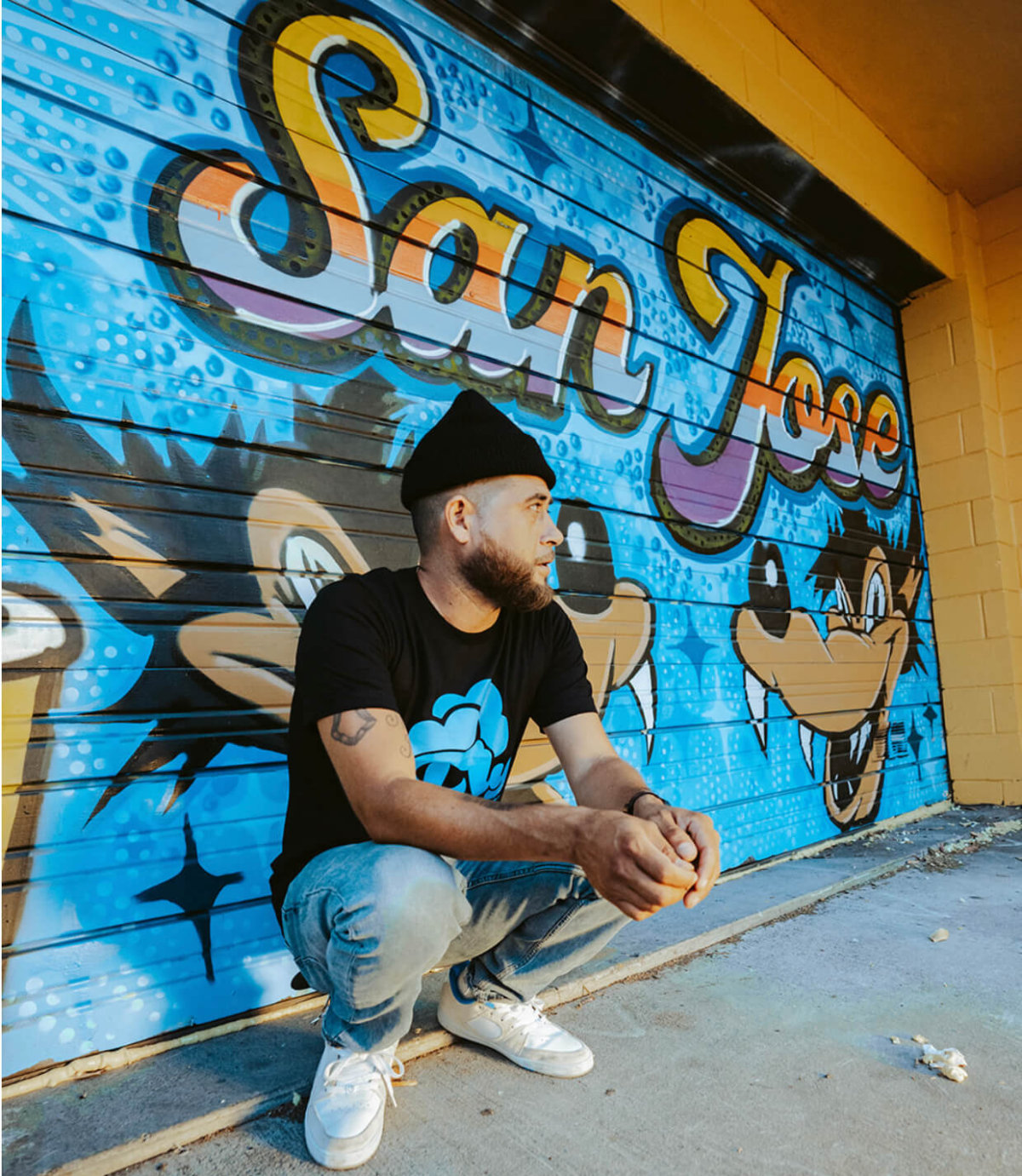
This month, NCIA’s editorial department is reviving the monthly Member Spotlight series by highlighting our Social Equity Scholarship Recipients as part of our Diversity, Equity, and Inclusion Program. Participants are gaining first-hand access to regulators in key markets to get insight on the industry, tips for raising capital, and advice on how to access and utilize data to ensure success in their businesses, along with all the other benefits available to NCIA members.
Tell us a bit about you, your background, and why you launched your company?
 I have been using cannabis for 20 years, and got into the industry in 2011, before METRC was implemented, and before adult-use legalization. I was working in cultivation, budtending, purchasing, and managing. At the time, I was seeing firsthand the products dispensaries were providing, and began developing a vision of what the San Jose community needed versus what was out there. Stepping back from my position at a successful dispensary, I made a choice to go all in on my visions and build a delivery service and lifestyle brand in San Jose. I created iFlyWellness for the people.
I have been using cannabis for 20 years, and got into the industry in 2011, before METRC was implemented, and before adult-use legalization. I was working in cultivation, budtending, purchasing, and managing. At the time, I was seeing firsthand the products dispensaries were providing, and began developing a vision of what the San Jose community needed versus what was out there. Stepping back from my position at a successful dispensary, I made a choice to go all in on my visions and build a delivery service and lifestyle brand in San Jose. I created iFlyWellness for the people.
iFlyWellness delivery service will connect the legendary Humboldt County to the Bay Area. Offering a unique flower menu from Humboldt County to Indoor exotic flower, iFlyWellness will cater to the everyday smoker/user, specifically the people of San Jose. There are over 1.1 million people in San Jose, with a high percentage of cannabis users. Connecting the “farm to blunt” is the method behind iFlyWellness. Patients are currently buying jars at ninety dollars an eighth. The everyday consumer has struggles affording such medicine. The logic is to figure out a way for patients to consume top-tier flower at an affordable price.
What unique value does your company offer to the cannabis industry?
I know quite a few cannabis growers and will go straight to the source. This is the “farm to blunt” experience. The indoor cultivation side and the Humboldt side both make a supply chain connection from the Emerald triangle all the way to the Bay Area. This is really good medicine for the people.
What is your goal for the greater good of cannabis?
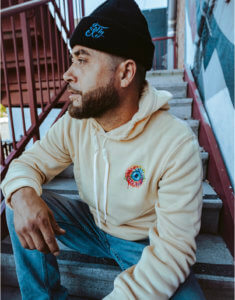 It’s about getting on the ground. Talking directly to the people in the community that you want to make a social impact with. I am working with Daniel Montero and Javier Armas of BALCA (Bay Area Latino Cannabis Alliance), and I am connected directly with Humboldt farmers and legacy growers.
It’s about getting on the ground. Talking directly to the people in the community that you want to make a social impact with. I am working with Daniel Montero and Javier Armas of BALCA (Bay Area Latino Cannabis Alliance), and I am connected directly with Humboldt farmers and legacy growers.
Our vision is for the patient to feel a direct connection with the flower they are smoking. Big corporations in this industry fail to recognize that this industry has been here for over 100 years. They are looking at the industry as a money grab. You can make it as a small business owner, but it comes with many more challenges. Forming alliances among us and going directly to the people helps us face these challenges.
What kind of challenges do you face in the industry and what solutions would you like to see?
Capital is big and can dominate the industry. I am working right now with Javier Armas of BALCA to acquire a building and license in Oakland, CA. With the minimal amount of licenses the city of San Jose has to offer, if you don’t have deep pockets, it can be challenging applying for the same license that a multi-million dollar corporation is applying for.
Why did you join NCIA? What’s the best or most important part about being a member?
I joined NCIA through the DEI Scholarship Program to learn and network, as the cannabis industry is constantly changing and I need to stay up to date. When I was working for dispensaries in San Jose, I was networking a lot but representing someone else’s company, not representing my vision and dreams of connecting and catering to the everyday cannabis consumers. It’s time now to build my vision and with the strength of great associations like NCIA and BALCA, I’m confident it will happen.
Member Blog: Does Your Cannabis Brand Need Social Media? Yes, But Not For the Reasons You Think

By Aaron Rosenbluth, Hybrid Marketing Co
Every cannabis brand needs social media. But, the reasons to be on social media, and how you should approach your accounts might surprise you.
Social media is a powerful tool for all businesses today. Even in the cannabis industry, where most paid advertising opportunities – including paid social – are off the table.
It’s an effective way to communicate with customers directly. Social media lets your cannabis brand or dispensary start meaningful conversations – it’s a place to develop and nurture a community. But should you look at social media as a primary business driver? Probably not; hear me out.
Five years ago, when I started managing social media accounts for cannabis brands, organic engagement wasn’t easy, but it was easier than it is today. Marketers (like me) remember the era of chronological Instagram feeds and simplified Facebook algorithms fondly. Five years ago, getting organic attention from your followers was more straightforward. It was also easier to build an audience quickly.
Strict regulations are a constant battle for cannabis businesses marketing on social media. We’re violating every platform’s terms of service and community guidelines just by being there. Every cannabis brand wants social dominance. I’m here to deliver unfortunate news; social media dominance is off the table for most of you.
Today, you can only expect to reach about 3% of your audience on most social media platforms. And that’s if your content is excellent. But even with amazing content, algorithms are your enemy, and hashtags only get you so far.
It can feel like an impossible challenge. We’re tasked with bolstering brands but walk a tightrope of rules to keep posts and accounts from getting the boot.
Do cannabis brands still need to be on social media? Yes. Here’s why.
You can access a limitless direct-to-consumer digital platform if you can manage to grow and maintain a social media following. But, of course, it’ll take time to build an engaged community (for many of you, it’ll take years of hard and consistent work), and you need to be realistic – don’t put all of your cannabis marketing eggs in the social media basket; there are other ways (email and programmatic advertising for example).
Still, social media is a business necessity today, just like printer cartridges or desk chairs. You must be there – even if the task is seemingly impossible.
What makes excellent social media content?
Every marketing “expert” on the internet will tell you the key to social media success is excellent content. And that’s true. But, what makes for awesome content is relatively subjective – it’s not for you or me to decide. So, who gets to decide what makes terrific content? Your customers, that’s who.
How do you determine if your customers think your content is excellent? They’ll reward you with engagement. And engagement is virtually the only thing almighty social media algorithms care about.
Maybe your customers love ridiculous memes; perhaps they prefer higher-brow lifestyle content. If you run a dispensary, your customers might love seeing their favorite budtenders highlighted on your feeds. If you’re a cultivator, your customers probably think drool-worthy strain content is excellent (be careful, Instagram is advanced enough to find flower images, and that violates TOS and community guidelines).
Here are a few social media post types you should consider:
- Expert Budtender Recommendations
- Cultivation Behind-the-Scenes
- Aspirational Lifestyle Imagery and Content
- Humorous Memes for Cannabis Enthusiasts
- General Cannabis Education
- Product Education
- Consumption Tips and Guidelines
You need to deeply understand your customers (that’s why we’re persona development sticklers) and craft a content strategy explicitly designed for engagement. Of course, I’m vastly oversimplifying this process – it takes time and a lot of testing to determine what will work best for your cannabis brand. But the results are often worth the work. Let your customers tell you what they want.
Even with excellent content, you need to be realistic.
I’m going to break some hard news to you – even with genuinely excellent content, you can still really only expect to reach around 3% (as I mentioned earlier) of your total audience. So whoever told you that organic engagement on social media is easy lied to you.
Most people think there’s one overarching algorithm controlling what we see on our social media feeds. But, in the case of Instagram, for example, several algorithms work together, making tiny decisions in real-time to determine the posts you see.
Adam Mosseri (head of Instagram) talks about how their algorithms work in a recent blog:
“One of the main misconceptions we want to clear up is the existence of “The Algorithm.” Instagram doesn’t have one algorithm that oversees what people do and don’t see on the app. We use a variety of algorithms, classifiers, and processes, each with its own purpose. We want to make the most of your time, and we believe that using technology to personalize your experience is the best way to do that.
When we first launched in 2010, Instagram was a single stream of photos in chronological order. But as more people joined and more was shared, it became impossible for most people to see everything, let alone all the posts they cared about. By 2016, people were missing 70% of all their posts in Feed, including almost half of posts from their close connections. So we developed and introduced a Feed that ranked posts based on what you care about most.
Each part of the app — Feed, Explore, Reels — uses its own algorithm tailored to how people use it. People tend to look for their closest friends in Stories, but they want to discover something entirely new in Explore. We rank things differently in different parts of the app, based on how people use them.”
Instagram wants to personalize content for users, so it’s constantly making small decisions to reach its goal. Your job (and ours, as marketers) is to understand our customers deeply enough to create unique personalized experiences (I prefer to use the word experience over content in this scenario). Still, the algorithms pose a challenge which is why you need to understand that it’s going to take a lot of time, a lot of trial and error, and more content than you think you can possibly create in a lifetime to build and manage a loyal – and engaged – community.
It’s not impossible, but it’s not easy – many of you will fail. But still, you must be there because your customers expect you to show up for them in the places they hang out digitally. Of course, it doesn’t hurt to have the support of an experienced social media marketing team.
 Aaron is Hybrid Marketing Co‘s Content Director, and he loves to write blogs. He’s written so many blogs that he’s lost count. And beyond his skills as a copywriter and storyteller, he’s an obsessive reader and researcher. Aaron writes on subjects ranging from cannabis to collaboration, social equity to HR software, interior design to cybersecurity. His words attract, engage, educate, and convert. Btw, Aaron hates the phrase “content is king” (even though content is king – and queen).
Aaron is Hybrid Marketing Co‘s Content Director, and he loves to write blogs. He’s written so many blogs that he’s lost count. And beyond his skills as a copywriter and storyteller, he’s an obsessive reader and researcher. Aaron writes on subjects ranging from cannabis to collaboration, social equity to HR software, interior design to cybersecurity. His words attract, engage, educate, and convert. Btw, Aaron hates the phrase “content is king” (even though content is king – and queen).
Hybrid Marketing Co is a Denver-based branding and marketing agency that specializes in building custom strategies that supercharge growth and drive revenue. Working with brands and businesses across the U.S. and Canada, Hybrid’s partners run the full-spectrum of the cannabis world including dispensaries, manufacturers, cultivators, and ancillary businesses. Visit hybridmarketingco.com to learn more about the Hybrid approach.
Meet The Team: Amy Rose – NCIA’s Business Development and Partnerships Manager
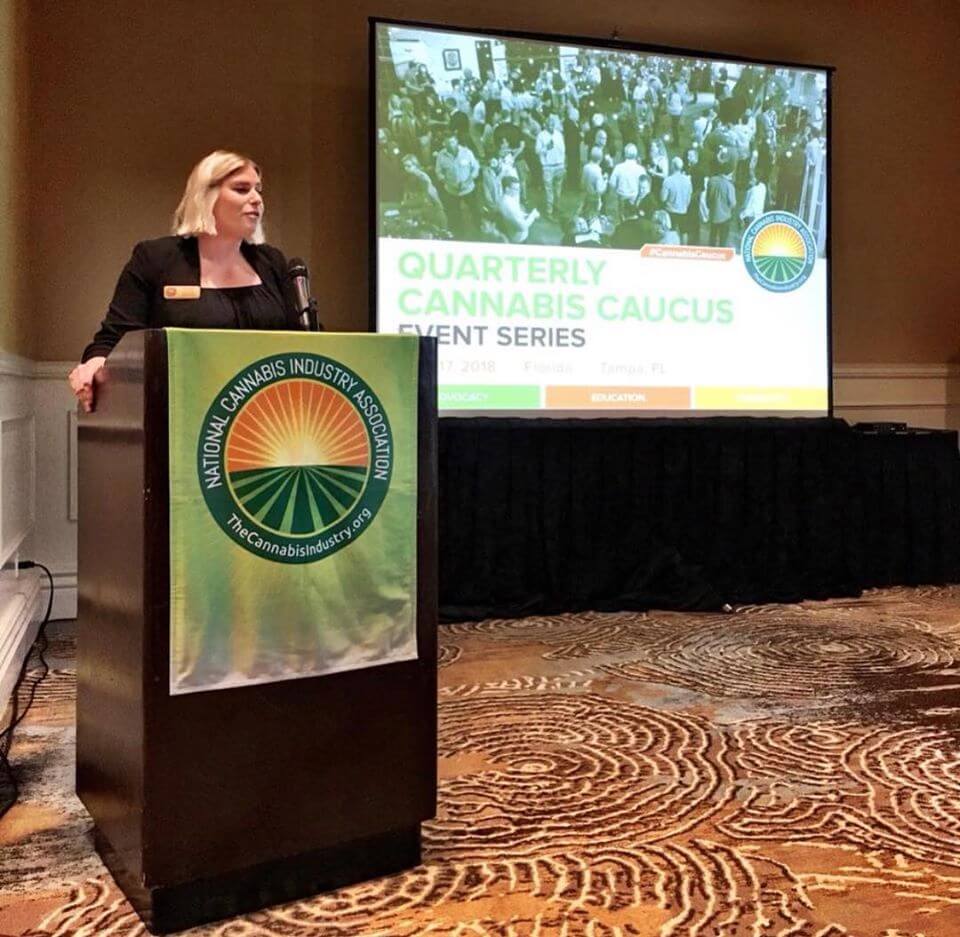
When I think about where I was 5 or 10 years ago, I would have never imagined that this is the career path I would be on. When I left college in 2013 with a Bachelor of Arts in Sociology, I considered so many options. Not one of them was working in the cannabis industry. I contemplated becoming a teacher. Maybe I should be a social worker? What about some sort of community outreach position? But before making any decisions on my career, I decided to take a huge step back and move my life across the country, with one suitcase, and with barely enough money in my pocket to survive more than a month.
The transformation of my life began in February 2014 in Colorado. A one-way flight. Four winter jackets (that I wore on the plane so I didn’t have to pay an extra baggage fee), three scarves, and whatever clothing I could fit in my one checked bag. Life ahead of me was extremely uncertain.
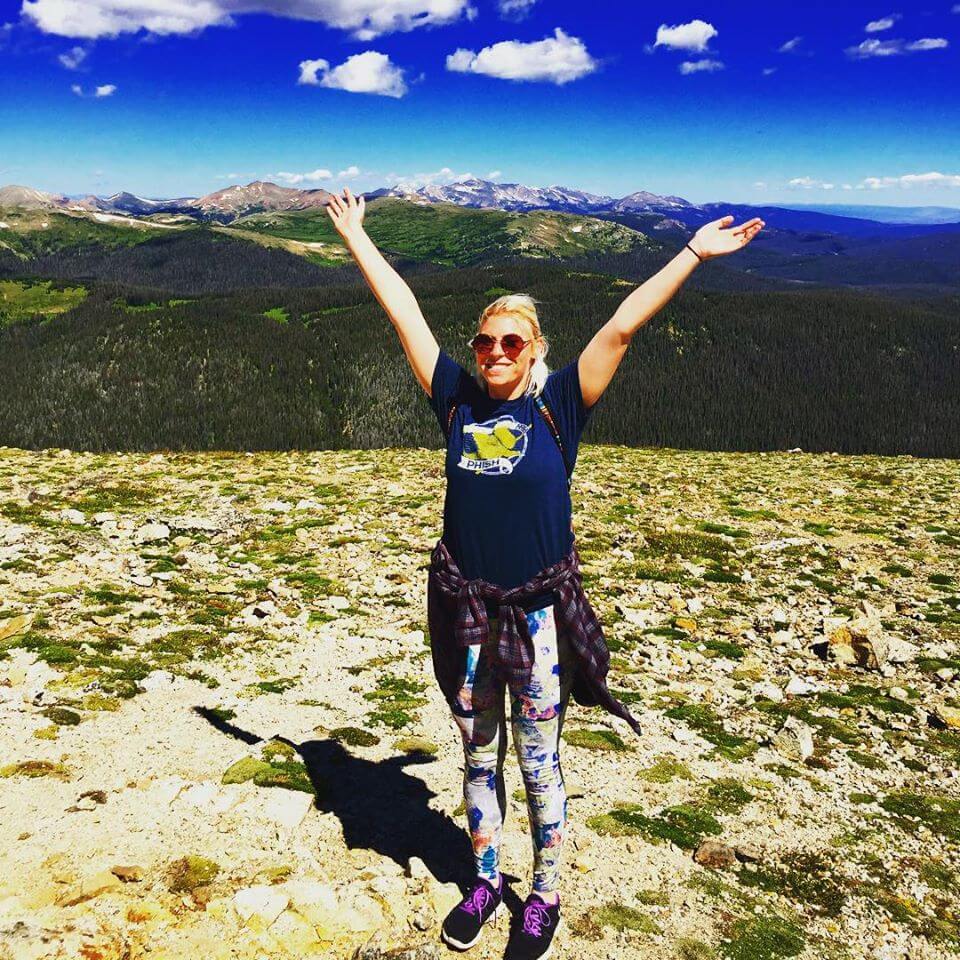 Coincidentally, I moved to Denver right after Colorado legalized the adult use of cannabis. That wasn’t the reason why I moved, although it definitely was a perk. I moved because I wanted a fresh start. I’d spent my whole life on the East Coast. First in a New Jersey suburb of New York City. Then on the west coast of Florida. After I finished school, I lived for a short while with my mom in very rural central Florida. It was horrible. Not a place for a young person. But it gave me time to think about what I wanted out of life. I knew I needed a change.
Coincidentally, I moved to Denver right after Colorado legalized the adult use of cannabis. That wasn’t the reason why I moved, although it definitely was a perk. I moved because I wanted a fresh start. I’d spent my whole life on the East Coast. First in a New Jersey suburb of New York City. Then on the west coast of Florida. After I finished school, I lived for a short while with my mom in very rural central Florida. It was horrible. Not a place for a young person. But it gave me time to think about what I wanted out of life. I knew I needed a change.
Things didn’t really go as planned. I was working long 60-hour weeks in restaurants and at catering gigs and was able to provide for myself, which was enough at the time. I told myself that by the fall of 2014, I wanted to get a “real job” whatever that meant. And so I did. I started working an administrative job at a physical therapy company. I learned a lot, had good days, bad days, but it certainly wasn’t making me happy. After spending 2 years working there, I felt like I was at a dead-end. I didn’t see the growth in myself that I had wanted to see. And I was more miserable at work than anyone should be.
The summer of 2016 was when I took a huge chance. I remember calling my family to tell them I got a job offer as a budtender at a dispensary and them thinking I was absolutely crazy for even considering it. A few weeks later, I got another job offer as an inventory manager at a dispensary. To my family, that seemed like a “real job” since if it didn’t work out, I’d have skills that I could transfer to something else. I was scared to take the leap, but nothing was scarier than staying at a job I was unhappy at.
My professional connection to the cannabis industry began in August 2016. I couldn’t believe it. Not only was I happier in my job, but I was making a living while working for a company in a relatively new industry that I truly believed in. I learned all about the retail and cultivation side of the cannabis industry. And I learned a whole lot more about myself. BGood Dispensary in Denver will always have a special place in my heart. I appreciate that they took a chance on someone new to the industry. Not to mention that they are long-time members of NCIA.
After spending a few months there, I decided to make my next move and work for a testing lab in Boulder, Rm3 Labs. I knew about cultivation and how dispensaries worked. My position at Rm3 Labs gave me the opportunity to understand the testing and regulations side of the industry. I was satisfied. But I wanted more.

My working relationship with NCIA started in July 2017. The past three years, as I’ve learned so much, have just flown by. I’ve been able to experience things I never imagined. Things that can only happen when you totally believe in the mission of your organization completely. I have been able to educate myself and others about things that are important to me personally and which I believe are important to society as well. Each day is an opportunity to learn something new. I’ve gotten to travel and experience new things that have contributed to my growth as a person. Sometimes I try to imagine where I’ll be five years from now. With this industry, that’s hard to tell.
Member Blog: Hiring New Budtenders – Keep Your Eyes Out For These Red Flags
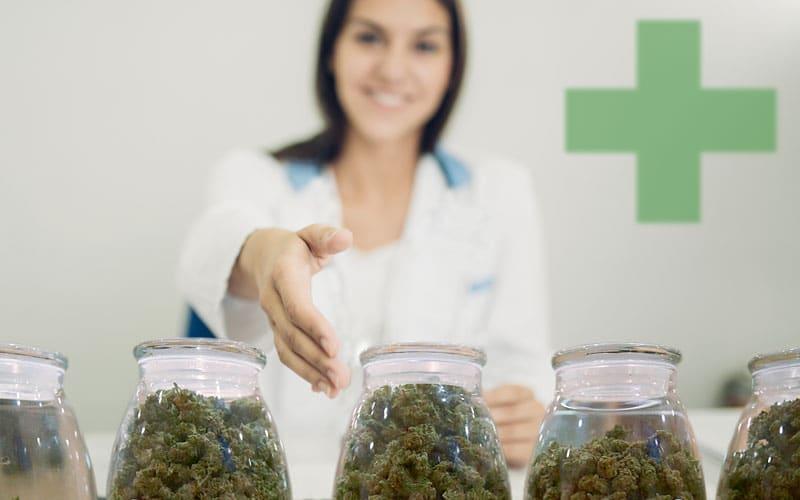
by Courtney Elder, CBD Nerds
The success of your dispensary relies on many things – your location, the quality of the products you sell, and the people who work for you. While it might seem as if you can put just about anyone behind the counter and have them ring up transactions, the art of being a budtender is a completely different animal. Managers and owners who are in the position of needing to replace or expand their current staffing may not fully realize how their employees can make or break their business, so let’s go through a few important considerations.
It goes without saying that anyone can end up unintentionally hiring someone they shouldn’t have, so if any of the following scenarios have happened to you, don’t feel bad. This information can help in many types of businesses and will specifically save you a headache if you work in the cannabis industry.
Cannabis Knowledge
On-the-job training is certainly something that every dispensary manager should provide, as it’s impossible for someone to walk right in and run the show on their very first day. However, it’s another situation entirely if your new hire doesn’t know the first thing about cannabis. Not only is a basic understanding required pertaining to strains, methods of consumption, and weed culture in general, but if they bring knowledge to the table that impresses you, they’re a keeper.
Anyone who can’t answer simple questions about cannabis or CBD may not be the best choice for your operation unless you have the time and patience to teach someone from the ground up. Ultimately you want your customers to feel as if they’re consulting with experts, not the other way around.
Don’t Neglect Background Checks
This tip can take a two-fold approach, as the person you end up hiring is going to be trusted with access to tons of product, money, and maybe even the store keys someday. Reference checks are a must in today’s day and age, so if they don’t readily have people available for you to chat with, you may want to dig a little deeper.
Aside from simply calling previous employers, it doesn’t hurt to run a full background check on your potential new employee. You never know if people are representing themselves truthfully and it’s always better to be safe than sorry. Again, if your prospect is uncomfortable with this idea, you don’t simply want to brush it off and continue hiring them anyway. That’s not to say that you should instantly dismiss them either as some people have a criminal record they are embarrassed by but have changed.
Common Sense And Intuition
When it comes down to it, working as a budtender does require a specific set of skills but in general isn’t that much different than many other professional retail occupations. Take some time to consider everything a person brings to the table, listen to your gut, and above all else, let common sense guide you. If something doesn’t feel right about your new hire, pay attention to that notion or else it could cost you your business.
 Courtney Elder is a cannabis and CBD expert. She’s a mother of 2 from Portland, Oregon and has done countless hours of research around both cannabis and CBD benefits. She’s written for some of the industries top authority sites and is the lead content creator at CBD Nerds.
Courtney Elder is a cannabis and CBD expert. She’s a mother of 2 from Portland, Oregon and has done countless hours of research around both cannabis and CBD benefits. She’s written for some of the industries top authority sites and is the lead content creator at CBD Nerds.



 Gary Cohen is the CEO of Cova Software, the fastest growing technology brand in the cannabis industry. Cohen’s focus has been driving the company’s overall strategy, including its vision, go-to-market plan, and strategic development. Since joining the cannabis industry in 2016 and launching Cova commercially in 4q17, Cohen has led Cova to dominate the enterprise sector for dispensary Point of Sale, while forging client relationships with hundreds of single-store retailers across North America.
Gary Cohen is the CEO of Cova Software, the fastest growing technology brand in the cannabis industry. Cohen’s focus has been driving the company’s overall strategy, including its vision, go-to-market plan, and strategic development. Since joining the cannabis industry in 2016 and launching Cova commercially in 4q17, Cohen has led Cova to dominate the enterprise sector for dispensary Point of Sale, while forging client relationships with hundreds of single-store retailers across North America.


 Founded in 1996,
Founded in 1996, 

 It’s about getting on the ground. Talking directly to the people in the community that you want to make a social impact with
It’s about getting on the ground. Talking directly to the people in the community that you want to make a social impact with
 Aaron is
Aaron is
 Coincidentally, I moved to Denver right after Colorado legalized the adult use of cannabis. That wasn’t the reason why I moved, although it definitely was a perk. I moved because I wanted a fresh start. I’d spent my whole life on the East Coast. First in a New Jersey suburb of New York City. Then on the west coast of Florida. After I finished school, I lived for a short while with my mom in very rural central Florida. It was horrible. Not a place for a young person. But it gave me time to think about what I wanted out of life. I knew I needed a change.
Coincidentally, I moved to Denver right after Colorado legalized the adult use of cannabis. That wasn’t the reason why I moved, although it definitely was a perk. I moved because I wanted a fresh start. I’d spent my whole life on the East Coast. First in a New Jersey suburb of New York City. Then on the west coast of Florida. After I finished school, I lived for a short while with my mom in very rural central Florida. It was horrible. Not a place for a young person. But it gave me time to think about what I wanted out of life. I knew I needed a change.

